-
01-01-2015
Risk classification in pediatrics: development and validation of a guide for nurses
Revista Brasileira de Enfermagem. 2015;68(5):913-922
Abstract
Risk classification in pediatrics: development and validation of a guide for nurses
Revista Brasileira de Enfermagem. 2015;68(5):913-922
DOI 10.1590/0034-7167.2015680521i
Views0See moreABSTRACT
Objective:
to develop and validate a short guide for the protocol to user embracement with risk classification in pediatrics.
Method:
methodological study developed in two stages: development of the guide, and face and content validation. The development involved the stratification of the protocol contents into five risk indicators according to the level of complexity; subsequently it was submitted to validation by nine experts divided in two groups: professors who were also researchers, and nurses.
Results:
in the face validation the experts considered the 25 items of the guide clear and understandable, with agreement levels above 70%. In the content validation, 17 (68%) items were considered relevant by 88.9% of the experts. The eight items considered irrelevant were changed according to suggestions of the experts, yielding an overall content validity index of 0.98.
Conclusion:
the study resulted in a guide for the classification of risks in pediatrics that is valid to assess children in emergency services.
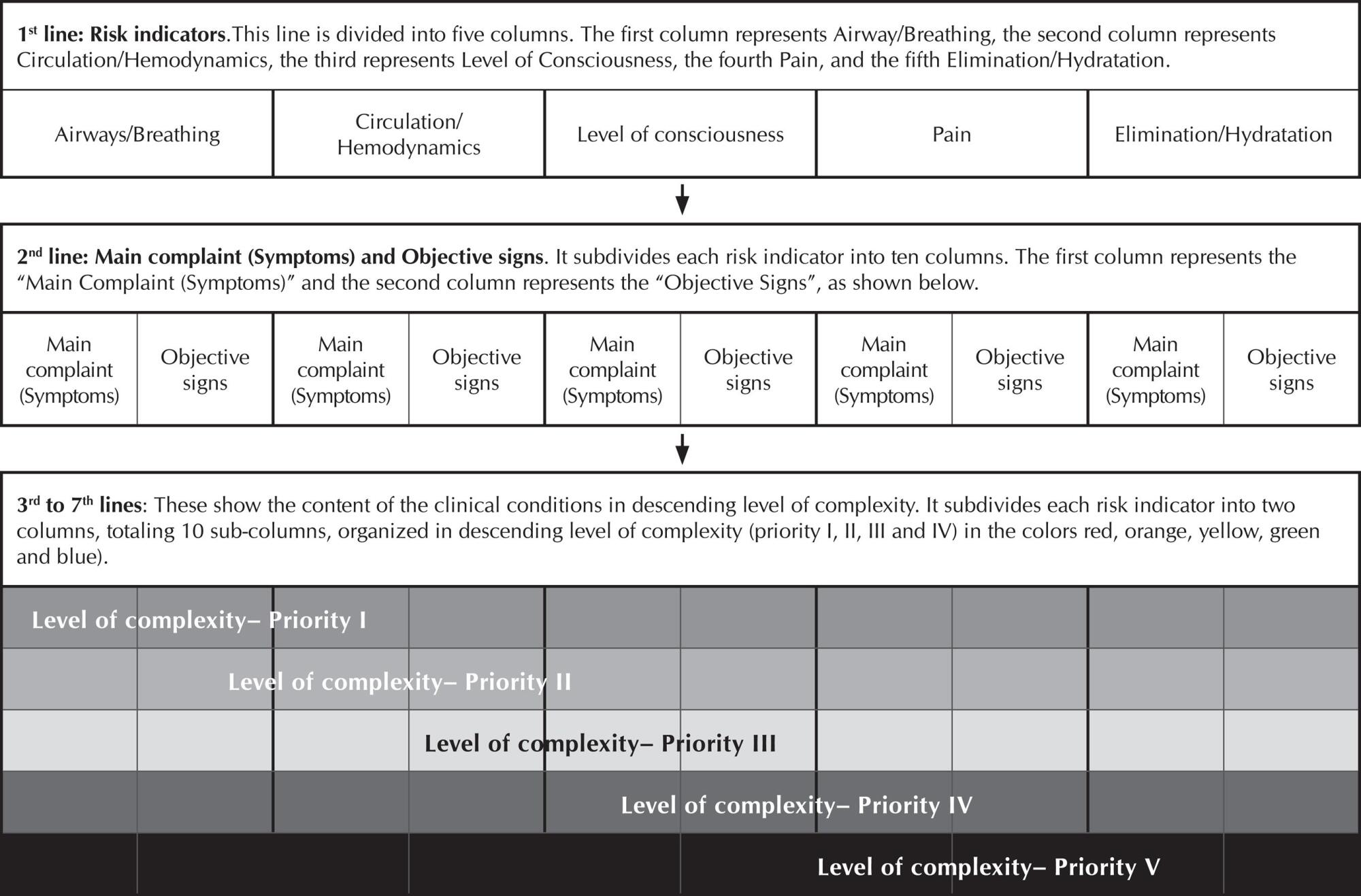
-
01-01-2015
Components of social learning theory in a tool for teaching Nursing
Revista Brasileira de Enfermagem. 2015;68(5):906-912
Abstract
Components of social learning theory in a tool for teaching Nursing
Revista Brasileira de Enfermagem. 2015;68(5):906-912
DOI 10.1590/0034-7167.2015680520i
Views0See moreABSTRACT
Objective:
to identify key components of the social learning theory in a computational tool to aid in teaching the reasoning process for the preparation of a nursing diagnosis.
Method:
qualitative study that analyzed the statements collected through a focus group of 18 teachers and students from two Brazilian nursing schools.
Results:
the themes were grouped into four categories related to the components of the theory and into 13 subcategories.
Conclusion:
the meaning of learning can be extended by the teacher’s didactics and corroborated by the relationship between systematization and reasoning. To learn by doing, some prerequisites are required as is a process of motivation and qualification, which are also inherent to learning by forming an identity in the group. In the feeling of belonging to a particular group, aspects related to the profession become visible as opposed to the aspects of belonging to a community of practice of learning.
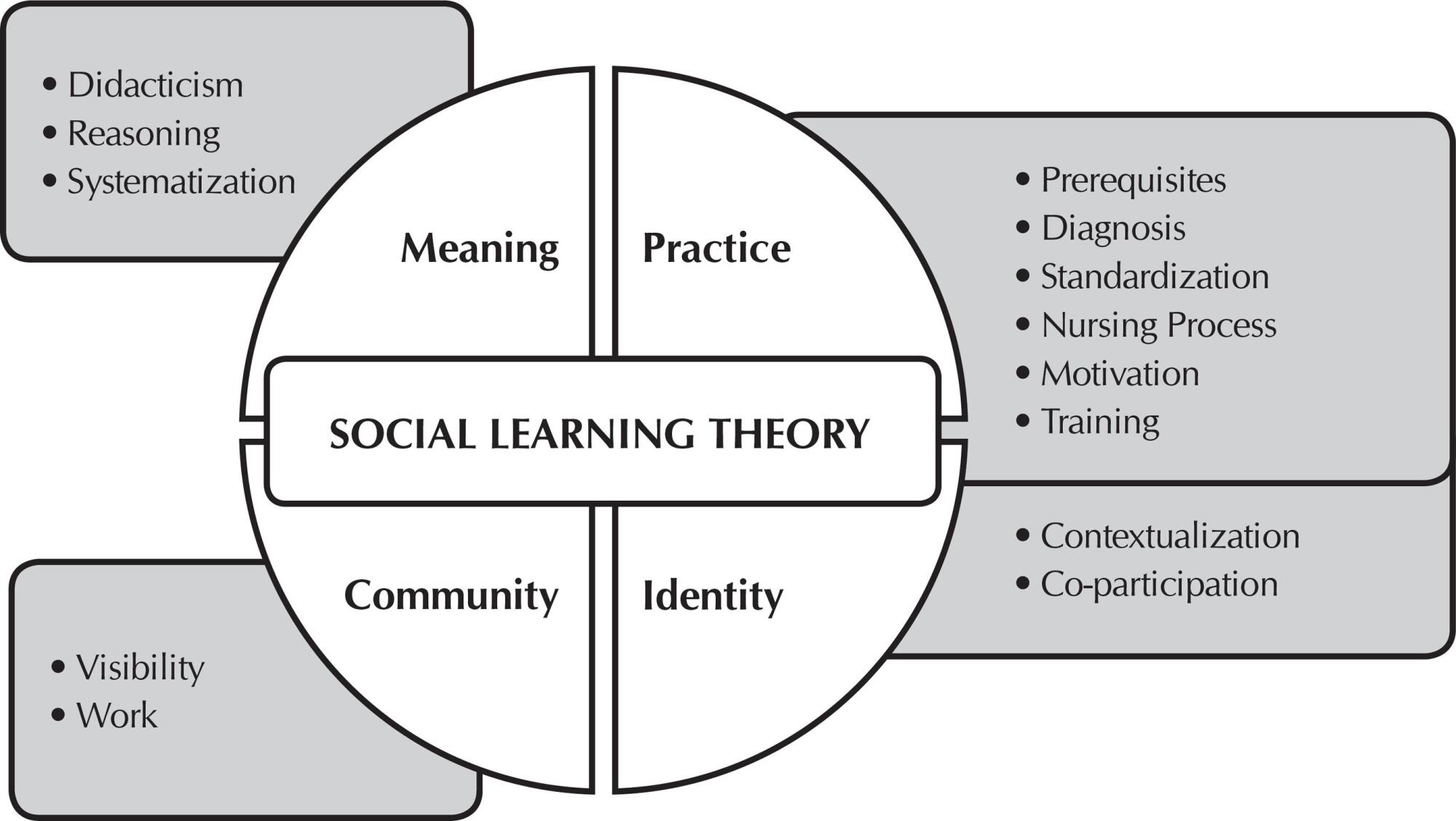
-
01-01-2015
Telephone call for post-discharge surveillance: validation and application of tool for video-assisted surgery
Revista Brasileira de Enfermagem. 2015;68(5):899-905
Abstract
Telephone call for post-discharge surveillance: validation and application of tool for video-assisted surgery
Revista Brasileira de Enfermagem. 2015;68(5):899-905
DOI 10.1590/0034-7167.2015680519i
Views0See moreABSTRACT
Objective:
to validate an instrument for post-discharge surveillance by telephone for video assisted surgeries.
Method:
a multi-method study with development, validation and application of the instrument. The validation was performed by experts considering the relevance, clarity and completeness of the contents in the calculation of the content validity index and valid questions that demonstrated 80% agreement. For the application of the instrument, the sample consisted of 68 women undergoing video-assisted surgery, and we conducted a descriptive analysis.
Results:
there was disagreement among experts in the first evaluation, and the instrument was redesigned obtaining agreement in the second evaluation. The response rate to the telephone contact was 88.2% (60/68). Complaints of abdominal pain, bleeding and incisional edema were more frequent. No patients presented with infection.
Conclusion:
the questionnaire was validated and applied and is available for use.
-
01-01-2015
Managerial competences of coordinators of undergraduate nursing courses
Revista Brasileira de Enfermagem. 2015;68(5):890-898
Abstract
Managerial competences of coordinators of undergraduate nursing courses
Revista Brasileira de Enfermagem. 2015;68(5):890-898
DOI 10.1590/0034-7167.2015680518i
Views0See moreABSTRACT
Objective:
to analyze the experiences of how the managerial competences of coordinators, ideal and real, of undergraduate nursing course coordinators from the city of Belo Horizonte, Minais Gerais.
Method:
the theoretical framework presented a conceptual model of eight managerial roles (director, producer, monitor, coordinator, mentor, facilitator, broker and innovator) and three specific competences to the exercise of each one of them. Descriptive and qualitative research with 14 interviews conducted using semi-structured scripts, whose data were subjected to content analysis.
Results:
we highlighted the roles: mentor, director and facilitator as the most prominent, whose competences can be continually improved as a result of differentiated and permanent demands which the subject face, in addition to the natural ambiguities and contradictions of management function.
Conclusion:
the higher education institution can adjust their selection and evaluation processes for this position, including the difficulties of professional competences training required in the exercise of managerial function.
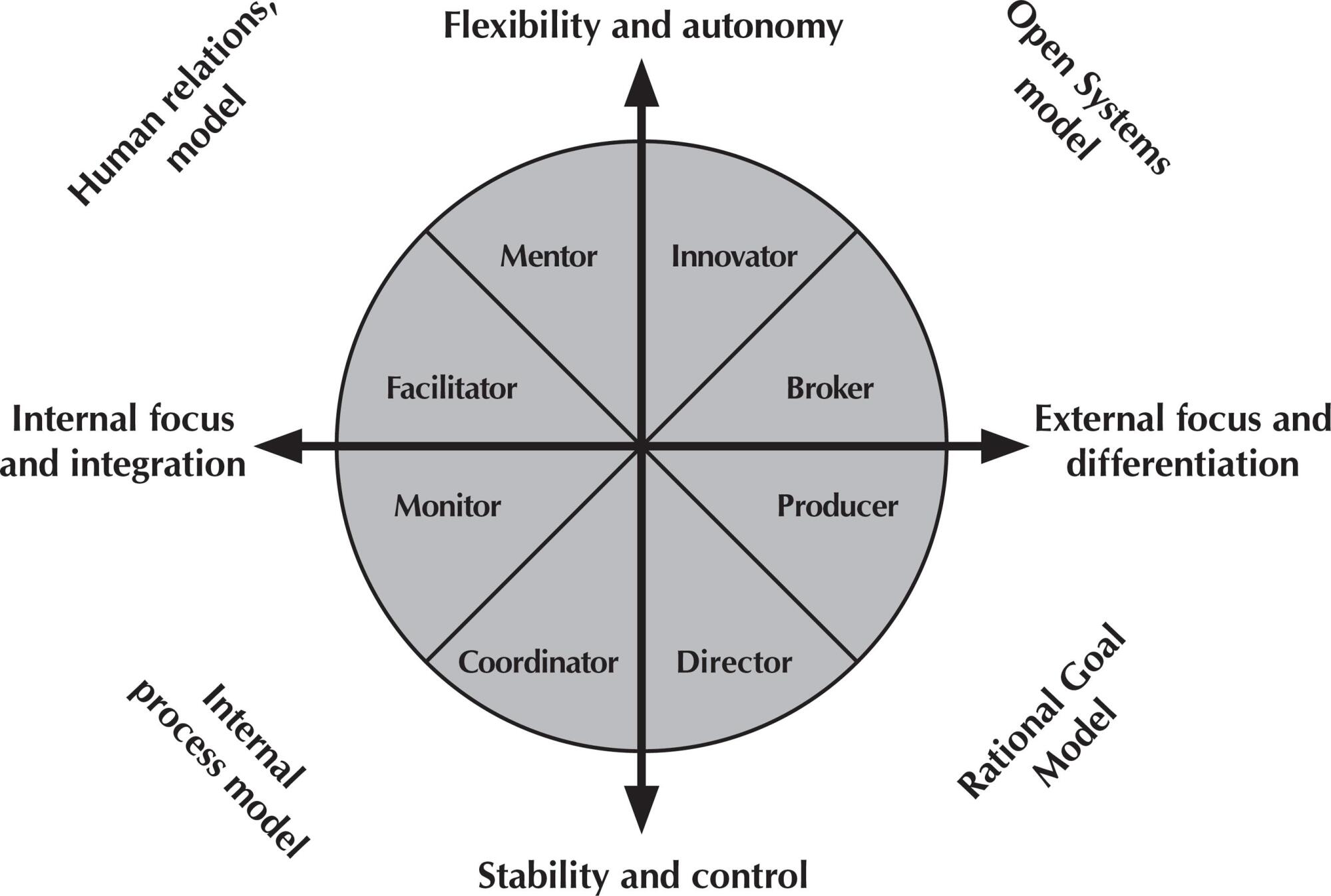
-
01-01-2015
Family participation to elderly rehabilitation with femoral fracture
Revista Brasileira de Enfermagem. 2015;68(5):883-889
Abstract
Family participation to elderly rehabilitation with femoral fracture
Revista Brasileira de Enfermagem. 2015;68(5):883-889
DOI 10.1590/0034-7167.2015680517i
Views0See moreABSTRACT
Objective:
verify if the mode of care adopted by caregivers favored functional independence recovery by elderly with and without the presence of nervous system disease and mental and behavioral disorders; and, if disease interfered with their functional independence.
Method:
transversal study, with 12-month follow-up of 89 Brazilian elders (≥ 60 years) after proximal femoral surgery, and their family caregiver.
Results:
the Functional Independence Measure scores decreased by 0.7 points per year of life, and in the case of presenting nervous system disease and mental and behavioral disorders, this loss amounted to 20.5 points.
Conclusion:
The incentive to ambulate increased by 18.8 for self-care, 12.8 for self-care, and 11.5 for leisure activities on the Functional Independence Measure. Encouraging movement and ambulation, self-care and leisure activities, especially with those elderly with nervous system diseases and mental and behavioral disorders, is recommended.
-
01-01-2015
Participação familiar para a reabilitação de idosos com fratura de fêmur
Revista Brasileira de Enfermagem. 2015;68(5):883-889
Abstract
Participação familiar para a reabilitação de idosos com fratura de fêmur
Revista Brasileira de Enfermagem. 2015;68(5):883-889
DOI 10.1590/0034-7167.2015680517i
Views1See moreRESUMEN
Objetivo:
verificar si el modo de cuidar adoptado por los cuidadores favoreció la recuperación de la independencia funcional de los ancianos con y sin la presencia de enfermedad en el sistema nervioso y trastornos mentales y comportamentales y si enfermedades interfirieron en la independencia funcional.
Método:
estudio trasversal, con seguimiento por 12 meses de 89 ancianos brasileños (≥ 60 años), sometidos a cirugía de fémur proximal y sus cuidadores familiares.
Resultados:
los scores de la Medida de Independencia Funcional disminuyeron 0,7 puntos por año vivido y, en el caso de enfermedad en el sistema nervioso y trastorno mental y comportamental, esa pérdida aumentó para 20,5 puntos. El incentivo a la deambulación aumentó 18,9, al autocuidado 12,8 y al ocio 11,5 puntos de la Medida de Independencia Funcional.
Conclusión:
se recomienda el incentivo al movimiento y a la deambulación, al autocuidado y a las actividades de ocio, principalmente en aquellos ancianos con enfermedades en el sistema nervioso y trastorno mental y comportamental.
-
01-01-2015
Absenteeism – illness of the nursing staff of a university hospital
Revista Brasileira de Enfermagem. 2015;68(5):876-882
Abstract
Absenteeism – illness of the nursing staff of a university hospital
Revista Brasileira de Enfermagem. 2015;68(5):876-882
DOI 10.1590/0034-7167.2015680516i
Views0See moreABSTRACT
Objective:
to analyze absenteeism – illness of the nursing staff.
Method:
this was a retrospective study of a university hospital in the city of Goiânia, Goiás, Brazil, using a quantitative approach. Data were collected from functional records of the staff during the period from 2008 to 2012.
Results:
of 602 workers, 435 had 1574 medical certifi cates. Diseases of the musculoskeletal system and connective tissue, followed by mental and behavioral disorders were the major diseases for sick leave. The occupation with the highest number of medical certifi cates was the nursing technician. Females and the age group between 41-50 years prevailed in the sample. Ambulatory was the area with most frequent events, followed by the medical clinic and emergency room.
Conclusion:
absenteeism-illness affects the functioning of the service, the nursing staff and users, promoting work overload, and interfering in the quality of nursing care.
-
01-01-2015
The nurse faced with early weaning in child nursing consultations
Revista Brasileira de Enfermagem. 2015;68(5):869-875
Abstract
The nurse faced with early weaning in child nursing consultations
Revista Brasileira de Enfermagem. 2015;68(5):869-875
DOI 10.1590/0034-7167.2015680515i
Views0See moreABSTRACT
Objective:
analyze the role of the nurse regarding early weaning in children younger than 6 months old.
Method:
qualitative and descriptive study. The nurses who performed the study did nursing consultation to children programmatically in family health units in Cuiabá – Mato Grosso. Data were collected in January and February 2012, through participant observation of nursing consultations. For data analysis, content analysis was used.
Results:
that nurses, in most cases, used appropriate strategies for the management of common problems in breastfeeding, although some behaviors have not yet proven scientifi c evidence about the benefi ts and/or damage to its practice.
Conclusion:
nurses addressed important aspects of breastfeeding during consultations and worked for the promotion and resumption of exclusive breastfeeding.
-
REVIEW06-10-2022
Self-inflicted violence and suicide in people living with HIV/AIDS: a systematic review
Revista Brasileira de Enfermagem. 2022;75:e20210768
Abstract
REVIEWSelf-inflicted violence and suicide in people living with HIV/AIDS: a systematic review
Revista Brasileira de Enfermagem. 2022;75:e20210768
DOI 10.1590/0034-7167-2021-0768
Views0See moreABSTRACT
Objectives:
to analyze intellectual productions on self-inflicted violence and suicide in people living with HIV/AIDS.
Methods:
a systematic review, carried out between March and April 2021, in the PubMed®/MEDLINE®, Web of Science and LILACS databases, subsidized in the Strengthening the Reporting of Observational Studies in Epidemiology. The period outlined was from 2011 to 2020.
Results:
a total of 199 studies were identified, and 16 composed the final sample, grouped into the categories: Sociodemographic characteristics of victims of self-inflicted violence/suicide and their intervening factors (pointing to young adults, especially homosexuals, with low social support and a history of mental illness or substance abuse as usual victims); Successful measures for suicide prevention/control in people living with HIV/AIDS (suggesting more frequent psychosocial and clinical follow-up of those starting antiretroviral and immunocompromised treatment).
Conclusions:
biopsychosocial follow-up, analysis of sociodemographic profile and intervening factors should be frequent in this population for disease prevention/control.

-
ORIGINAL ARTICLE09-05-2022
Screening for common mental disorder in elderly residents in the countryside: a cross-sectional study
Revista Brasileira de Enfermagem. 2022;75:e20210875
Abstract
ORIGINAL ARTICLEScreening for common mental disorder in elderly residents in the countryside: a cross-sectional study
Revista Brasileira de Enfermagem. 2022;75:e20210875
DOI 10.1590/0034-7167-2021-0875
Views0See moreABSTRACT
Objective:
To estimate the prevalence of common mental disorders and their associated factors in the elderly in a municipality in the countryside of the Brazilian Midwest.
Methods:
Quantitative, observational, cross-sectional approach research, conducted with 218 elderly people.
Results:
The prevalence of the common mental disorder among the elderly was 25.1%; in the univariate analysis, it was higher in females (35.4%), in the age group of 80 years or older (46.1%), brown skin color (30.2%), widowed (42.6%), illiterate (47.6%), and retired (27.6%). In the multiple analysis, the variables female gender (p<0.006), age 80 years or older (p<0.036), dissatisfaction with life (p<0.009), lack of social interaction (p=0.017), and dysfunctional family (p=0.021) remained associated with CMD.
Conclusion:
The results revealed are helpful and contribute to the reinforcement of the need for mental health care in this population extract so growing worldwide.
-
ORIGINAL ARTICLE06-03-2022
Association between falls in older adults and prevention group
Revista Brasileira de Enfermagem. 2022;75:e20200207
Abstract
ORIGINAL ARTICLEAssociation between falls in older adults and prevention group
Revista Brasileira de Enfermagem. 2022;75:e20200207
DOI 10.1590/0034-7167-2020-0207
Views0See moreABSTRACT
Objectives:
to assess the effectiveness of guidelines on fall prevention in a group of older adults in Primary Health Care.
Methods:
a cross-sectional study, carried out with older adults selected by a simple random sample (274; N=1,234). Data covered sociodemographic and socioeconomic variables, marital status, health conditions, factors associated with falls and participation in the prevention group. Student’s t test was used, and dichotomous variables were used by the chi-square test. The project met ethical requirements.
Results:
sample with female profile (61.7%), married, with low education, mean age of 71.69 years. The factors associated with falls identified were female sex, medicalization and participation in the prevention group. There was no protective association between participation in a fall prevention group in older adults and a decrease in the number of falls.
Conclusions:
based on evidence, a personalized intervention during the nursing visit is suggested as a strategy to prevent falls.

-
ORIGINAL ARTICLE03-07-2022
Predictors of frailty in older people users of Primary Health Care
Revista Brasileira de Enfermagem. 2022;75:e20201292
Abstract
ORIGINAL ARTICLEPredictors of frailty in older people users of Primary Health Care
Revista Brasileira de Enfermagem. 2022;75:e20201292
DOI 10.1590/0034-7167-2020-1292
Views0See moreABSTRACT
Objective:
to identify the prevalence and predictors of frailty in older people in Primary Health Care.
Method:
this is a descriptive and correlational study, carried out in a convenience sample of 136 older people in the community. Data were collected through a sociodemographic and clinical questionnaire and frailty phenotype. Student’s t test or U-Mann-Whitney test, chi-square and binary logistic regression were used for data analysis.
Results:
the prevalence of frailty was 26.5% (n=36). Frail individuals had older age (p=0.011), worse self-rated health (p=0.001) and lower physical capacity (p<0.001). In the multivariable regression, it was observed that frail individuals had older age (Odds Ratio=1.111; 95% confidence interval=1.026-1.203) and worse physical capacity (Odds Ratio=0.673; 95% confidence interval=0.508-0.893).
Conclusions:
the prevalence of frailty in older people in Primary Health Care was considerable. Advanced age and worse physical capacity were the most relevant predictors of frailty in the elderly.
-
ORIGINAL ARTICLE04-15-2022
Validation of Questionnaire to Assess the Impact of Dementia on the Family
Revista Brasileira de Enfermagem. 2022;75:e20210232
Abstract
ORIGINAL ARTICLEValidation of Questionnaire to Assess the Impact of Dementia on the Family
Revista Brasileira de Enfermagem. 2022;75:e20210232
DOI 10.1590/0034-7167-2021-0232
Views0See moreABSTRACT
Objective:
To validate a questionnaire to assess the impact of dementia on one of the household members.
Methods:
Methodological study. The instrument was designed based on literature review, expert opinion, and researchers’ experience and then applied to a non-probability convenience sample consisting of 262 family members who live daily with a person with dementia. The construct validity was studied by exploratory factor analysis, principal components method, with varimax rotation of the items.
Results:
An instrument with 30 items was obtained, distributed in four dimensions: “Emotional dimension,” “Economic dimension,” “Family relations dimension,” and “Support-seeking dimension.” Factor analysis revealed a total explained variance of 54.96% and a total Cronbach’s alpha of .899.
Conclusions:
The instrument presents high internal consistency, grouped into four dimensions, all closely related to the family’s adaptation to the onset of dementia in one of its members.
-
ORIGINAL ARTICLE03-07-2022
Is self-esteem associated with the elderly person’s quality of life?
Revista Brasileira de Enfermagem. 2022;75:e20210388
Abstract
ORIGINAL ARTICLEIs self-esteem associated with the elderly person’s quality of life?
Revista Brasileira de Enfermagem. 2022;75:e20210388
DOI 10.1590/0034-7167-2021-0388
Views0See moreABSTRACT
Objective:
To analyze the association between self-esteem and quality of life in the elderly.
Methods:
Cross-sectional web survey developed with 519 elderly people. Participants filled out three data collection instruments developed on the Google Forms platform and widely disseminated through all of Brazil. Fisher’s exact test, Mann-Whitney, Pearson correlation, and linear regression with 95% confidence interval were used.
Results:
Self-esteem was associated with all quality-of-life facets: sensory skills [β= 1.307; p<0.001]; autonomy [β= 2.101; p<0.001]; past, present, and future activities [β= 2.486; p<0.001]; social presence [β= 2.547; p<0.001]; death and dying [β= 2.175; p<0.001]; and intimacy [β=2.378; p<0.001].
Conclusion:
There is a positive and statistically significant association between self-esteem and quality of life in the elderly. We therefore suggest the development of local policies capable of raising this age groups’ self-esteem and reaffirming aging as a new possibility for discoveries and pleasure.
-
EXPERIENCE REPORT10-24-2022
Nursing process for elderly women susceptible to falls from the perspective of the Pender’s Model
Revista Brasileira de Enfermagem. 2022;75:e20210913
Abstract
EXPERIENCE REPORTNursing process for elderly women susceptible to falls from the perspective of the Pender’s Model
Revista Brasileira de Enfermagem. 2022;75:e20210913
DOI 10.1590/0034-7167-2021-0913
Views0See moreABSTRACT
Objectives:
to describe the strategy of applying the nursing process guided by Pender’s Health Promotion Model to elderly women susceptible to falls with a view to promoting a self-efficacy behavior for fall prevention.
Methods:
application of the nursing process to eleven elderly women who had already experienced falls, living in a neighborhood in the outskirts of Belem, state of Pará, which involved interviews to obtain their nursing history and group meetings using the focus group technique to develop the other phases of the nursing process: nursing diagnosis, nursing interventions, and nursing assessment.
Results:
despite the risk factors for falls, the intervention model adopted in this study allowed elderly women to enhance their self-efficacy.
Final Considerations:
the model proved to be suitable for the participation of elderly women in actions to build fall prevention behaviors, with a view to healthier lifestyles.

-
ORIGINAL ARTICLE10-24-2022
Factors associated with symptoms of physical and emotional burden in informal caregivers of the elderly
Revista Brasileira de Enfermagem. 2022;75:e20210927
Abstract
ORIGINAL ARTICLEFactors associated with symptoms of physical and emotional burden in informal caregivers of the elderly
Revista Brasileira de Enfermagem. 2022;75:e20210927
DOI 10.1590/0034-7167-2021-0927
Views1See moreABSTRACT
Objectives:
to analyze the personal and work-related burden factors associated with physical and emotional symptoms of informal caregivers of the elderly.
Methods:
cross-sectional study conducted with 121 informal caregivers and 121 seniors who received care, assessed individually for the risk of: physical overload, musculoskeletal symptoms, Self-Reporting Questionnaire, effort perception, and Katz index.
Results:
a greater perception of effort raises up to 3.3 times the chances of presenting symptoms of pain in the spine region (p=0.01), and lower functional capacity of the elderly increases up to 1.3 times the chances of presenting pain symptoms in the spine region (p=0.02). The symptoms of emotional overload were associated with the caregiver’s low income (p=0.02).
Conclusions:
the perception of effort, dependence of the elderly, caregiver’s age, and symptoms of emotional overload are involved with caregivers’ symptoms of physical overload, and low income, with emotional overload.
-
ORIGINAL ARTICLE09-21-2020
Family management ofchildren who experience sickle cell disease: a qualitative study
Revista Brasileira de Enfermagem. 2020;73:e20190521
Abstract
ORIGINAL ARTICLEFamily management ofchildren who experience sickle cell disease: a qualitative study
Revista Brasileira de Enfermagem. 2020;73:e20190521
DOI 10.1590/0034-7167-2019-0521
Views1See moreABSTRACT
Objective:
to know the family management experience of children with sickle cell disease in the light of the Family Management Style Framework.
Methods:
a qualitative case study carried out between September/2015 and July/2016 with 12 members of eight families registered in a blood center in Minas Gerais. The semi-structured interviews were recorded, and the data were analyzed and interpreted by the hybrid model thematic analysis.
Results:
three management styles were identified: five families in the accommodating style; two families in the struggling style; and only one family in the enduring style.It was noted that empowerment was paramount in the acquisition of skills and abilities to care for these children.
Final considerations:
family management knowledge of children with sickle cell disease provided a reflection on nurses’ role in supporting, orienting and encouraging the empowerment of these families aiming at the search for comprehensive care.
-
ORIGINAL ARTICLE09-16-2019
Spatial analysis on tuberculosis and the network of primary health care
Revista Brasileira de Enfermagem. 2019;72(5):1197-1202
Abstract
ORIGINAL ARTICLESpatial analysis on tuberculosis and the network of primary health care
Revista Brasileira de Enfermagem. 2019;72(5):1197-1202
DOI 10.1590/0034-7167-2017-0897
Views1See moreABSTRACT
Objective:
to analyze the spatial distribution of new cases of tuberculosis compared to the location of the Primary Healthcare Units that performed the compulsory notification.
Method:
ecological study conducted in Belém, Pará, with 5,294 new cases of tuberculosis notified to Sistema de Informação de Agravos de Notificação for the period from 2010 to 2014. The cases were georeferenced using the software applications ArcGis 10.2 and TerraView 4.2.2. The techniques of Kernel density and global Moran geostatistics were used.
Results:
the incidence of tuberculosis cases did not vary significantly between the years studied, however there was a variation in incidence between neighborhoods. Health units that exhibited higher number of notifications can suffer great influence of migration from nearby neighborhoods.
Conclusion:
the spatial dynamics of tuberculosis associated with health services allows to know the areas with increased risk of tuberculosis and the density of notifications of health units.
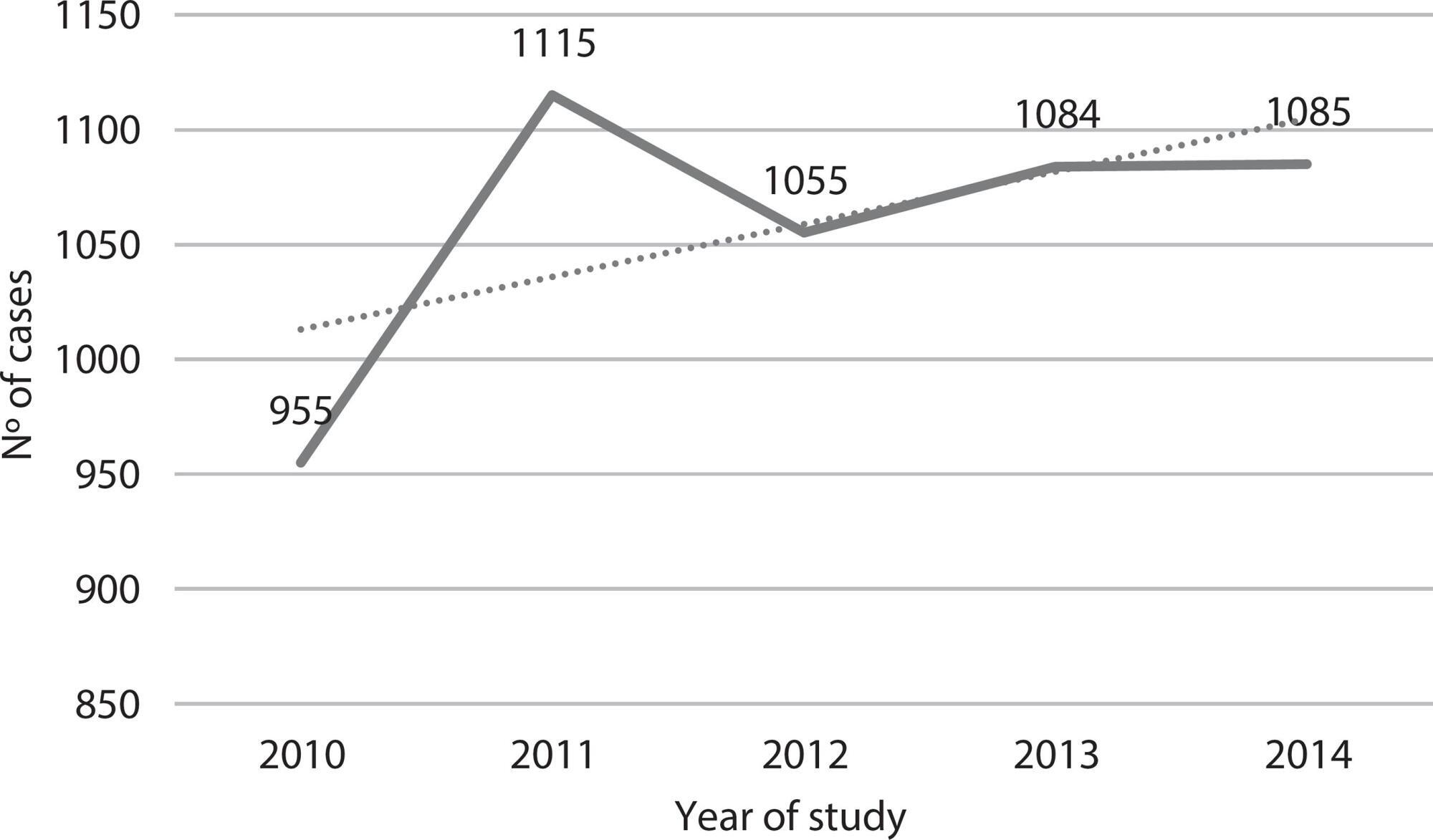
-
04-16-2021
Questionnaire for assessing patient safety culture in emergency services: an integrative review
Revista Brasileira de Enfermagem. 2021;74(2):e20190693
Abstract
Questionnaire for assessing patient safety culture in emergency services: an integrative review
Revista Brasileira de Enfermagem. 2021;74(2):e20190693
DOI 10.1590/0034-7167-2019-0693
Views0See moreABSTRACT
Objective:
to identify the instruments used to assess patient safety culture in emergency settings.
Method:
an integrative literature review conducted from 2000 to 2018.
Results:
13 instruments were identified to assess patient safety culture in hospital and pre-hospital emergencies, comprising 12 to 50 questions, grouped from three to 12 dimensions, with dimensions related to teamwork, support, and management actions for patient safety and for continuous process improvement and continuing education. The Emergency Medical Service Safety Attitude Questionnaire, which is exclusive for pre-hospital care, stands out.
Conclusions:
the choice and the best decision regarding the instrument are linked to the objectives, the environment and the population to be investigated, as well as the instrument’s reliability.
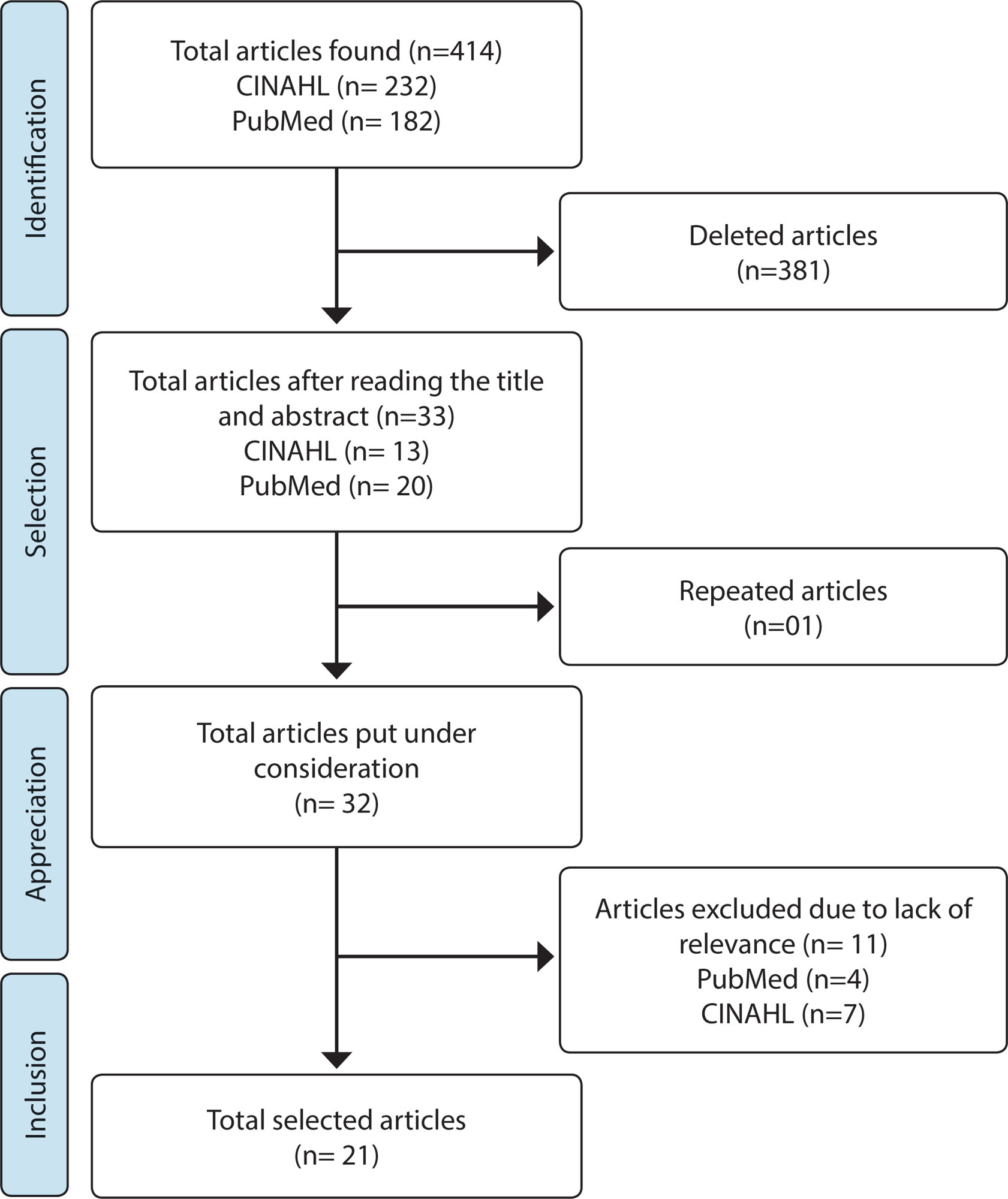
-
05-21-2021
Pleasure and suffering in the work of nurses at the oncopediatric hospital unit: qualitative research
Revista Brasileira de Enfermagem. 2021;74:e20200735
Abstract
Pleasure and suffering in the work of nurses at the oncopediatric hospital unit: qualitative research
Revista Brasileira de Enfermagem. 2021;74:e20200735
DOI 10.1590/0034-7167-2020-0735
Views0See moreABSTRACT
Objective:
To analyze the experiences that generate pleasure and suffering in the work of nurses in an oncopediatric inpatient unit.
Methods:
Qualitative, exploratory, descriptive study. Data collection took place from March to May 2018, through interviews with eight nurses in an oncopediatric inpatient unit.
Results:
The verbalized experiences of pleasure were the work developed with children, participation in the treatment and cure of patients and the recognition of family members in relation to the work performed. The suffering experiences were palliative care and death of patients, performing invasive procedures and organizing work.
Final considerations:
It was possible to analyze the experiences of pleasure and suffering of nurses in an oncopediatric unit through the psychodynamics of work, allowing to reinvent prevention and intervention measures by managers in health/mental illness processes at work.
-
REVIEW09-21-2020
Postnatal care of newborns in the family context: an integrative review
Revista Brasileira de Enfermagem. 2020;73:e20190454
Abstract
REVIEWPostnatal care of newborns in the family context: an integrative review
Revista Brasileira de Enfermagem. 2020;73:e20190454
DOI 10.1590/0034-7167-2019-0454
Views0See moreABSTRACT
Objective:
to analyze the postnatal care practices of newborns in the family context from the scientific literature.
Methods:
the searches of the integrative literature review were carried out in the Latin American and Caribbean Literature in Health Sciences (LILACS), Nursing Database (BDENF), Scientific Electronic Library Online (SciELO), and U.S. National Library of Medicine (PubMed) databases.
Results:
sixteen studies composed the final sample and, from these, two analytical categories emerged: Practices and doubts of families in postnatal care of newborns; and Best practices in postnatal care of newborns.
Final considerations:
several cultural practices of families differ from scientific recommendations, which can generate risks to the health of newborns. Therefore, it is essential to consolidate educational programs with family members, to improve the quality of care offered and to reduce preventable neonatal deaths in different socio-family contexts.

-
ORIGINAL ARTICLE03-07-2022
Predictors of frailty in older people users of Primary Health Care
Revista Brasileira de Enfermagem. 2022;75:e20201292
Abstract
ORIGINAL ARTICLEPredictors of frailty in older people users of Primary Health Care
Revista Brasileira de Enfermagem. 2022;75:e20201292
DOI 10.1590/0034-7167-2020-1292
Views0See moreABSTRACT
Objective:
to identify the prevalence and predictors of frailty in older people in Primary Health Care.
Method:
this is a descriptive and correlational study, carried out in a convenience sample of 136 older people in the community. Data were collected through a sociodemographic and clinical questionnaire and frailty phenotype. Student’s t test or U-Mann-Whitney test, chi-square and binary logistic regression were used for data analysis.
Results:
the prevalence of frailty was 26.5% (n=36). Frail individuals had older age (p=0.011), worse self-rated health (p=0.001) and lower physical capacity (p<0.001). In the multivariable regression, it was observed that frail individuals had older age (Odds Ratio=1.111; 95% confidence interval=1.026-1.203) and worse physical capacity (Odds Ratio=0.673; 95% confidence interval=0.508-0.893).
Conclusions:
the prevalence of frailty in older people in Primary Health Care was considerable. Advanced age and worse physical capacity were the most relevant predictors of frailty in the elderly.
-
REFLECTION03-24-2021
Workplace violence: legislation, public policies and possibility of advances for health workers
Revista Brasileira de Enfermagem. 2021;74(1):e20200335
Abstract
REFLECTIONWorkplace violence: legislation, public policies and possibility of advances for health workers
Revista Brasileira de Enfermagem. 2021;74(1):e20200335
DOI 10.1590/0034-7167-2020-0335
Views0See moreABSTRACT
Objectives:
to discuss specific laws and public policies for workplace violence in the health sector, highlighting possibilities for the collective confrontation of this phenomenon in Brazil.
Methods:
this is a reflective and argumentative study that refers to some previous experiences regarding the implementation of legal aspects to curb workplace violence directed at health professionals.
Results:
there are experiences regarding the existence of legislation or public policies to specifically contain workplace violence in the health sector, but these are still restricted to some places or countries. The literature provides resources for developing specific strategies for managing this phenomenon, highlighting prevention programs and conducts for case management.
Final Considerations:
implementation of legal aspects or public policies at the municipal, regional, state and/or national level is a strategy with potential to confront workplace violence in health services in a collective and sustainable way.
-
09-16-2019
Tuberculosis: knowledge among nursing undergraduate students
Revista Brasileira de Enfermagem. 2019;72(5):1279-1287
Abstract
Tuberculosis: knowledge among nursing undergraduate students
Revista Brasileira de Enfermagem. 2019;72(5):1279-1287
DOI 10.1590/0034-7167-2018-0384
Views0See moreABSTRACT
Objective:
To analyze the knowledge about tuberculosis among nursing undergraduate students of a Federal Higher Education Institution.
Method:
Descriptive cross-sectional study, with quantitative approach. Data were collected through a questionnaire based on the WHO’s guide to developing evaluation instruments on knowledge, attitudes and practices related to TB. Students were classified as “with knowledge” and “with little knowledge” based on the mean percentage of correct responses to the variables analyzed. Descriptive statistics techniques were used.
Results:
60 nursing students were interviewed. “with little knowledge” was observed among students who were studying at the university for less time and who had no previous contact with the subject, and “with knowledge” was observed among those whose knowledge about tuberculosis was acquired in the health services.
Conclusion:
Knowledge gaps among undergraduate nursing students were identified, suggesting the need to rethink teaching-learning strategies on the subject.
Search
Search in:
Nuvem de Tags
Adolescente (85) Atenção Primária à Saúde (239) COVID-19 (91) Criança (91) Cuidados de Enfermagem (269) Educação em Enfermagem (151) Educação em Saúde (139) Enfermagem (930) Enfermagem Pediátrica (86) Estudantes de Enfermagem (77) Estudos de Validação (131) Família (87) Idoso (208) Promoção da Saúde (99) Qualidade de Vida (104) Saúde do Trabalhador (86) Saúde Mental (145) Saúde Pública (82) Segurança do Paciente (150) Tecnologia Educacional (100)



